What trekking gear do you really need for Nepal? Trekking gear companies tell you to buy a long list of items before you even think of setting foot in Nepal or the Himalayas. I’m here to be more realistic. You don’t need everything they try to sell you. Items to pack, travel essentials for Nepal and some insider information from us, experienced trekkers and long-time tourists in Nepal, one of our favourite countries and home to the best hiking in the world.
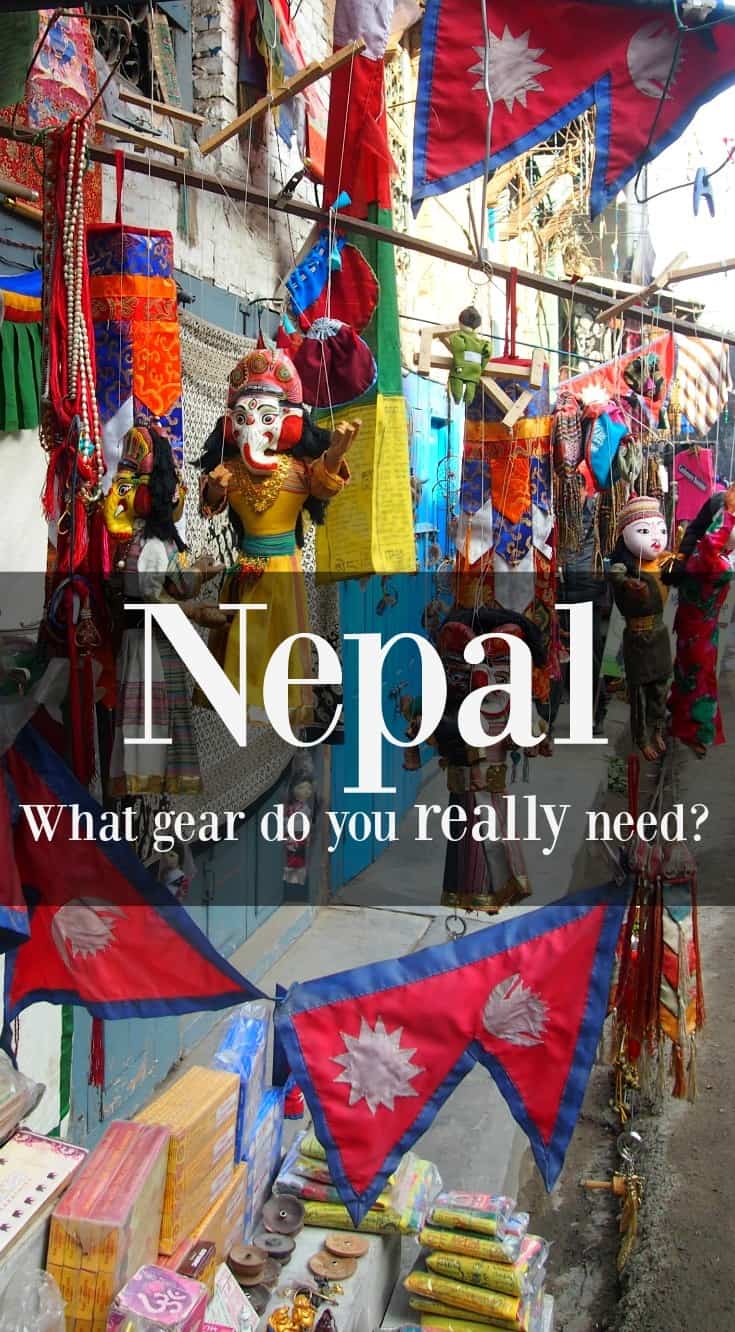
The menu below is clickable, click on the part of the post you need.
Nepal Trekking Gear
Keep your money in your pocket a little longer and read on. We’ve trekked the Everest region, Everest Base Camp (October, twice) and the Annapurna Circuit in winter (February), so let’s get real here about the trekking gear and equipment you will really need.
Some people head off for a walk looking like they’re summiting Everest and that’s overkill.
Shoes or boots for Nepal trekking are an important consideration, be sure to read that section of our post and never buy footwear online, you must try it on.
I’m not going to advise you, just tell you what we found necessary or unnecessary, obviously, you know your body and its comfort levels. That will affect your choices when buying your trekking gear for Nepal.
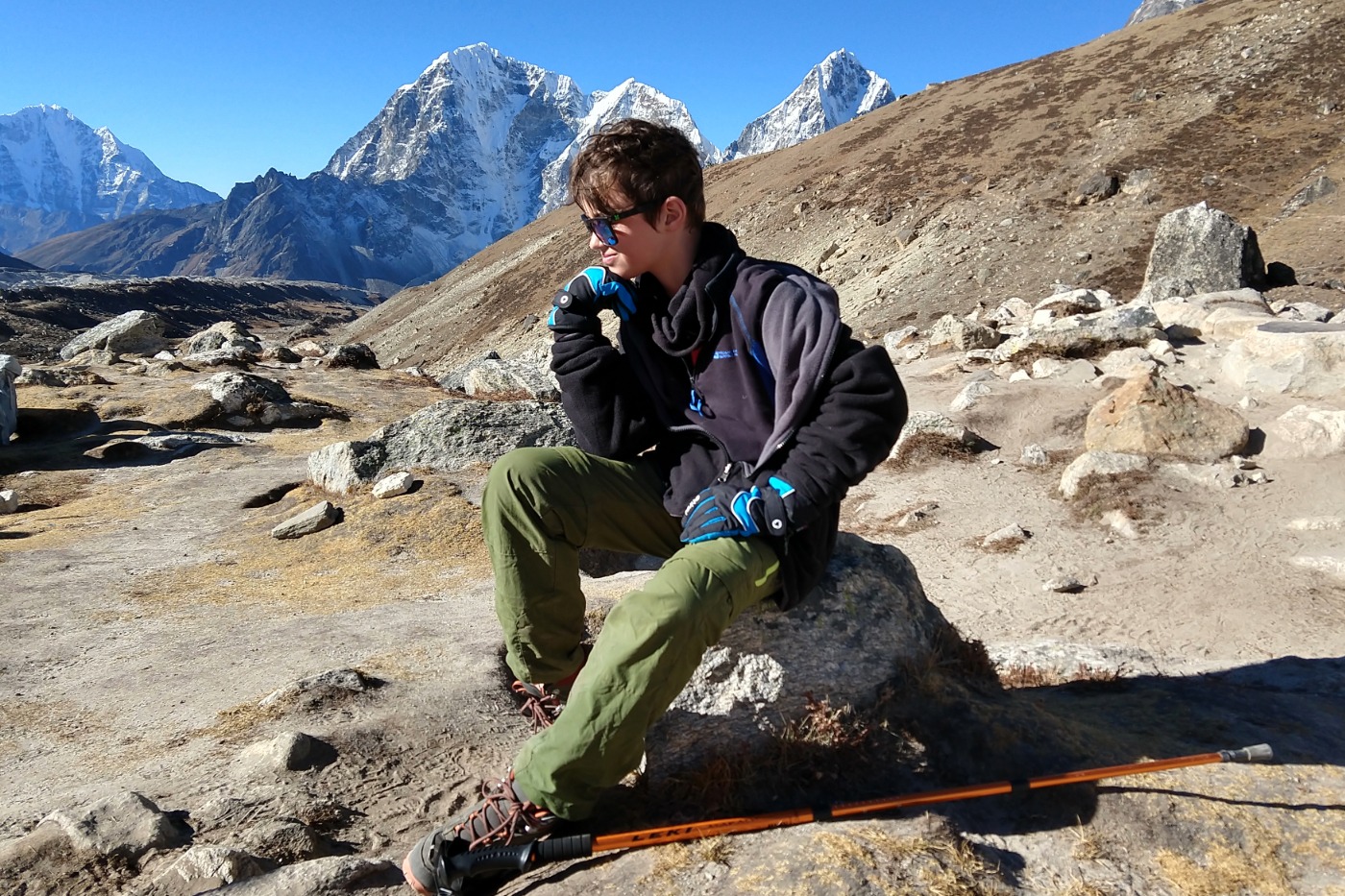
You have to make your own call and tell me what you decide in the comments. OK?
The gear you need in Nepal will also totally depend on how long you’re trekking and how high you’re going, and at what time of year. Our treks have been in winter to early spring and in October, peak season. The climate is very different on winter treks. In October we saw no snow at all, in February there were blizzards, bringing a whole new set of problems.
If you pay a porter to carry your gear, you can take a lot more stuff, but those of us who prefer to carry our own packs have to think about weight and necessity.
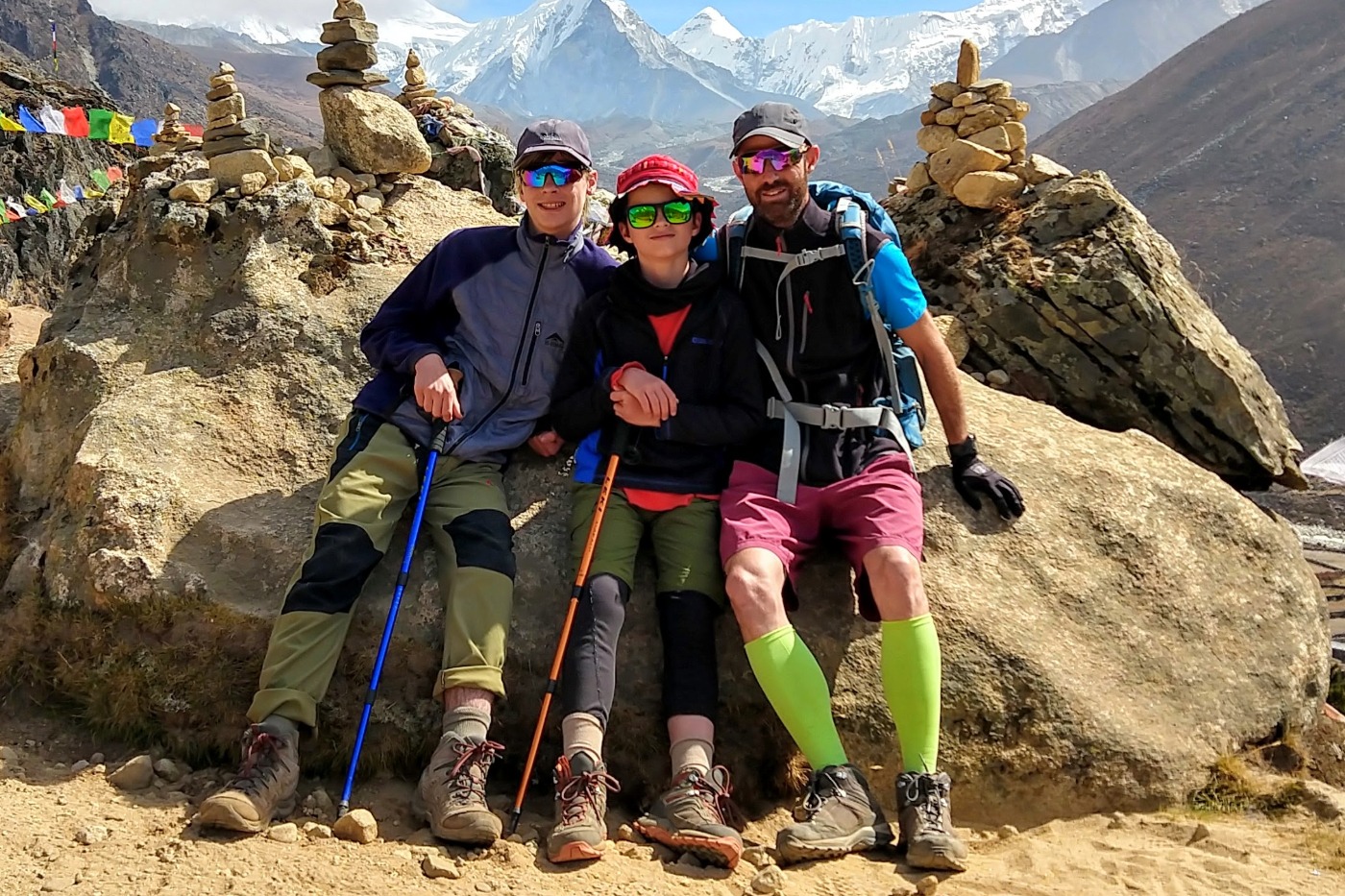
If you plan on visiting Nepal with kids and taking them on a trek, think long and hard about wether or not they should carry a pack. We didn’t expect our younger son to carry his own gear, but our elder teen was happy to carry a backpack weighing around 5 kg.
Buying Trekking Gear in Kathmandu Nepal
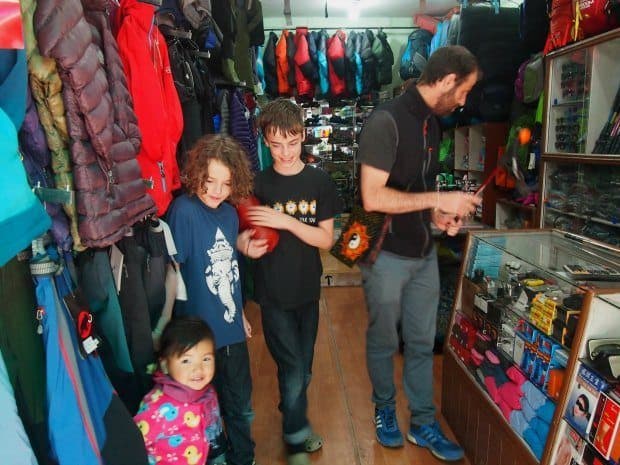
The Thamel area of Kathmandu is packed with trekking gear shops. Some trekking gear is genuine and sports a hefty price tag, most is fake but does the job just fine.
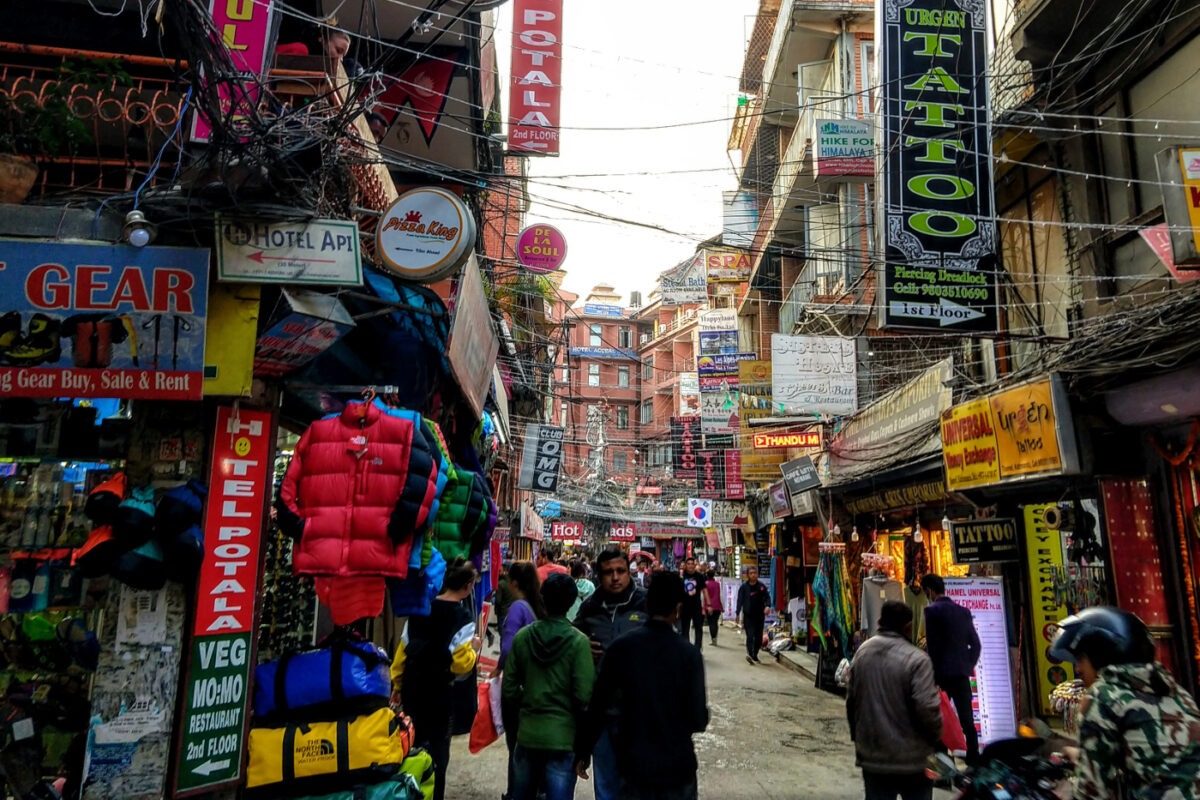
Always negotiate on price. Haggling is expected in these small trekking shops in Kathmandu.
If you have a few days to spend in Kathmandu or Pokhara before your trek you can easily kit yourself out with trekking gear. If you have children or you’re a larger size, this is harder.
Whether or not to trust the quality of the fake gear? It’s up to you. I have a lot of equipment bought in Kathmandu, as mentioned in this post, it’s always done me just fine. This includes heavy fleeces, trekking pants, gaters, Trekking poles and gloves. Gaters are essential in snow, but otherwise, we don’t pack them.
If you’re short of time then bring your trekking gear with you. You’ll want to spend your time enjoying the sights of Kathmandu, not visiting shops.
If you get stuck and are heading off on the Everest Base Camp Trek, we noticed this year that prices were good and often fixed in Namche Bazaar. This is new.
We bought extra socks and poles in Namche Bazaar at better prices than in Kathmandu. Nothing was fabulous quality, but it did the job.
If you’re looking for a place to stay in Kathmandu, read our post!
Kathmandu is at slight elevation meaning that, even in summer, it won’t get very warm there, you shouldn’t need completely different clothes for the city and the mountains. Temperature extremes in Kathmandu are -4C and 35C, whereas at Everest Base Camp the lowest was -60C, highest was about 25C. As Nepal is only 28 degrees north of the equator, daytime temperatures are fairly warm.
A Sleeping Bag for Nepal Trekking
You can buy a sleeping bag to take to Nepal with you, or you can rent a sleeping bag by the day in Kathmandu or Pokhara. You can also buy sleeping bags cheaply in Nepal. You can also not take a sleeping bag at all. I’ve been to Everest Base Camp without a sleeping bag to save weight.
Trekking lodges supply blankets but I doubt they ever wash them. They are plenty warm enough, but do you want to use them?
A good solution is to take a sheet or fleece sleeping bag liner, see below, and for my entire EBC trek in October this was all I used. October is warm and you’re unlikely to see much rain or snow, I certainly wouldn’t try to trek without a sleeping bag in winter.
Sleeping bags are bulky to carry and it’s a difficult decision to make, take one, or risk it?
If I were heading to Nepal specifically to trek (EBC, Thorong La, anywhere extreme) and buying and carrying gear wasn’t an issue, I would take my own, high-quality trekking sleeping bag.
But for lower altitude hikes I maybe still wouldn’t bother and maybe just take a fleece liner.
If you’re going high look for a bag that is ultra-light (the lightest mummy bag on the market (at time of writing) is 1.9 pounds, but it isn’t 4 season), mummy (to save bulk) with hood (essential) and ideally down.
It should be 4 season or suitable for below-freezing conditions. You’ll be looking for something like the sleeping bags here. They’re not too expensive, so buying a bag to take with you makes more sense than hiring a bag by the day in Nepal.
Check out this Hike and Bike sleeping bag for your Nepal Trek, it’s marketed as 4 season, to 0F (that’s minus 19C) That’s a very warm bag! It’s only 3.91 lb, that’s under 2Kg and compresses into a stuff sack. This sleeping bag should fit a tall adult up to 6 foot 6 inches tall. Sleeping bags do come in different lengths, so pick the shortest one to suit your height to save weight and bulk in your pack.
This bag’s little brother is the lightest on the market, but only takes you to 32F.
This one is heavier at 2.9 pounds to the Hyke and Byke Shavano’s 1.9 pounds, but you’re carrying extra warmth at under $40 extra cost.
You are unlikely to need a sleeping mat for Nepal, unless you know you’ll be camping. Every trekking lodge I’ve ever stayed in had mattresses.
Sheet Sleeping Bags and Sleeping Bag Liners
Sleeping bag liners, in cotton, silk or thermal materials are a very good travel investment. They’re not essential if you have your own sleeping bag, but if you plan on hiring a bag or not taking one at all, they’re gold.
TIP: Always go for mummy-shaped sleeping bags and liners to reduce bulk and weight.
The Sea to Summit Reactor Extreme (use this link to inspect) claims to add about 8C (25F) to a sleeping bag, is mummy shaped with box foot and drawstring hood (you will need a hood or hat in bed) It should weigh under 40 oz, 400g.
As I said I did the Everest Base Camp Trek without a sleeping bag, just a liner. I’m not recommending it, I’m just saying it’s possible.
You will absolutely need a warm hat to wear in bed, there is no heating in the lodges. I was fine, but I’m used to cold climates.
Electronic Equipment for Trekking and Visiting Nepal
You should take the bare minimum of electronic equipment to Nepal if you plan on trekking. If you are travelling with a laptop you should be able to leave it at your hotel in Kathmandu or Pokhara, along with any other bulky luggage, but I can’t vouch for the security of every accommodation provider.
We have never had any problems with doing this and have never experienced any theft in Nepal. For this reasoon we don’t usually recommend anti theft bags for travel in Nepal, but if you stand out as a wealthy tourist and are concerned about possible theft at busy sites, take a look at our post about these products.
The electronic equipment you should pack for Nepal includes your phone, a good watch, power banks or battery packs, and a camera if your phone isn’t enough for you. If you take a camera you should take spare batteries if required, cold can drain them fast.
Power Packs and/or Solar Chargers in Kathmandu, Pokhara and the Himalayas
You do need too pack battery packs or power banks for any type of travel in Nepal. The power was off more than it was on a couple of years ago in Kathmandu and Pokhara and long bus journeys, plus having to pay to charge in the mountains makes a power back-up absolutely essential for any kind of travel in Nepal.
Things are better in Nepal now but if, like us, you’re reliant on electronic devices like phones, laptops and Kindles, you will need electronic power back-up.
In the mountains it’s normal for guest houses to charge you to plug in. Sometimes the fee is per charge, sometimes it’s per hour.
It’s a couple of dollars here and there and costs quickly add up (particularly for us as a family of 4) so it makes sense to take devices with ultra-fast charging capabilities.
I like to take solar powered power banks. This means we can charge as we walk with solar panels attached to our packs.
If you are travelling long-term it’s always a good idea to carry these anyway.
You may also want a small, light regular power bank as the solars are pretty heavy at around half a Kg. We take both types of charger to Nepal, for 4 people to cover any eventuality.
If you are shopping from the USA the model below would be our pick. Unfortunately, it doesn’t seem to be available elsewhere just yet.
We have a couple of Hiluckeys brand solar chargers which are still going strong, and a Hobest.
These chargers should be waterproof, dustproof and shockproof, have extra fast mains charging as well as solar, can charge 2 devices simultaneously via twin USB ports and should clip on the outside of your pack to charge while trekking.
A built in flashlight is a bonus and some come with a whistle and compass. Just be aware that these chargers are heavy, we only take one solar power bank for the whole family plus 2-3 regular, lighter, chargers.
For shoppers outside the USA, the Hiluckey solar chargers are the ones we took to Everest Base Camp.
We’re happy to recommend them as a solid choice. We would only take a rugged model, at very least it should be waterproof and rapid charging is a must.
Check out our Hiluckey chargers below. If you need a lighter charger and happy to pay to charge it from the mains take a regular power bank or charger too.
Order a solar power pack here, on Amazon. (Opens in a new tab.)
A Good Camera or Camera Phone, Spare Batteries and Extra Camera Memory
The cold of the mountains makes batteries lose their charge quickly, you will need spare batteries.
As you most likely won’t be taking your laptop on trek and internet coverage is spotty at best, you’ll also be best taking plenty of memory.
As a professional travel blogger, I travelled with a Nikon D3300, it was the most compact, most lightweight DSLR I could find at a non-scary price.
It’s a popular camera because it’s so good, an excellent entry-level DSLR and for the Himalayas and the wonders of Kathmandu, you will want a good camera.
Tip: Put your camera, phone and batteries inside your sleeping bag at night, tuck your camera inside your fleece during the day. Try to keep everything warm
However, technology has marched on and as of late 2017 I did away with the bulky DSLR in favour of an excellent camera phone.
The Samsungs are excellent, so are the Apples, but my choice was between the new Huawei and Moto models because of their twin lens capabilities.
In the end I went with the Motorola. This decision wasn’t based on price, it’s a cheaper phone, yes (so realistically, a better travel choice), but it had the 3 features I needed, those twin cameras to give me incredible wide-angle shots, toughened glass and water resistance.
None of the top dollar models offered those 3 things at the time.
I buy phones unlocked to use anywhere in the world with local sim cards.
When using a phone as your primary camera, instant backup to Google photos makes life oh-so-simple even for me as a travel pro.
The Motorola also has fast charging, super useful when lodges charge for charge by the hour.
Trekking Watches and GPS for Nepal
A trekking watch maybe isn’t essential, but it’s certainly nice to have a watch with an altimeter, thermometer, barometer, and GPS.
My husband likes to have a watch with a heart rate monitor because he uses this for his Ironman training and events, I prefer the Casio watches for trekking.
Have a look at our full post on trekking watches here to see what’s on the market.
He tracked our ascents, descents, pace, and distance on the EBC every day and it was great to be able to do that.
Knowing your pace gives you a better idea of how long it will be before you reach your lodge.
Other Nepal Trekking Gear
Best Water Bottles for Nepal
On any multi-day or strenuous trek in Nepal you will certainly need a large water bottle (1 L, 32 oz, a quart approx), maybe two, if you’re not carrying your gear yourself and have a porter. In this section we’ll go through the various types of water bottle and tell you which is best for Nepal, on a trek, or for a sight seeing vacation in Nepal.
Wide-mouthed is best in Nepal if you are trekking because you will often fill your bottle with boiled water or even black tea in the trekking lodges. Your water bottle needs to be easy to fill.
Otherwise, you can fill it from taps, hoses or streams and use purification tablets. If you feel safe doing that. Sometimes in an emergency, you may have to.
Buy water purification drops here, online, before departure (US). For those of you travelling to Nepal from Australia you can buy the tablets here. From the UK, you can buy this type, which are really easy to carry. I would strongly suggest that you pack some form of water purification method for Nepal, even bottled water can’t be trusted 100% of the time.
Make sure you can fasten your water bottle easily to the outside of your pack. You’ll need to be able to access it easily
Camelback type drinking systems are also useful for trekking in Nepal, but not necessary for just seeing cities and sights (or visiting Chitwan). We have a system like this that we use for running, that has also been to EBC with us. You’ll need a trekking pack or daypack that has a water bladder sleeve and outlet. You’ll need to buy tthis separately Take a look at these bladders here. I would be very careful keeping the mouth part clean as dust (and dried faecal matter) from the trail will tend to stick to it.
You can buy Nalgene type water bottles in Kathmandu but I’m not comfortable with them, are they real? Are the BPA toxins in the plastic going to leach into your water? Kathmandu is full of fake gear, most of it is fine to use, but I wouldn’t trust a fake bottle.
I’d buy these at home and know for sure they are BPA free. You can buy one in the UK here. In Australia, wide mouth BPA free water bottles are available here.
The Nalgene Tritan Wide Mouth BPA-Free Water Bottle. Above, is one we’ve used on our Everest Base Camp treks. What size water bottle do you need for Nepal? 1L, 33oz is the best size to take. You have to be able to carry your water bottle and of course 1L of water weighs 1 kg. When trekking in Nepal weight is a huge consideration. I would not personally carry 2 full water bottles ever, but I may take a camel back plus a full water bottle when I’m trekking with my kids. I do not expect them to carry heavy packs.
Tip: A water bottle filled with boiled water (or black tea) makes a good hot water bottle and is ready to drink in the morning. Do not put milk tea or sugar drinks in your water bottle, you won’t be able to clean it adequately.
If you’d like to insulate your water bottle neoprene sleeves are also available. Search from the link above. Although we use a twin walled steel bottle for every-day use and sports, for Nepal, I wouldn’t take them. The insulated steel walls keep hot boiled water or black tea scalding hot for too long. These are the bottles we use at home, Super Sparrow is the brand and these screw top lids do not leak even when upside down in my day pack. (US link). Super Sparrow bottles are available in Australia here.
The steel water bottles are fine for cold water, but not boiled water. So if you’re just sightseeing in Nepal, these are great. Water tastes better out of steel bottles rather than plastic. Steel bottles are also a little heavier, of course.
Do not take water bottles to Nepal with fancy mouth parts, you will not be able to wash them adequately and good hygiene is essential in the mountains. Perfect the art of pouring water into your mouth, rather than putting your mouth on the bottle itself. It’s easy, my kids have been doing this since they were tiny. You’ll see it often in India and Nepal.
Water Purification Straws, Bottles and Tablets for Nepal
A Lifestraw will allow you to drink from streams and springs and there are plenty up there, each more sparkling than the next. I’ve never used one but I have friends who swear by them. You can take one and plan to use it often, or take one for emergencies. There are also water bottles with built in life straws. If you read the paragraph above, you’ll see why we don’t recommend them for Nepal.

You could also carry water purification tablets (as we mention in the paragraph above, take them, if only for emergencies), which we have used in India years ago, and on the Everest trek, purifying each bottle full of water as needed, or even opt for a water bottle with built-in Lifestraw technology.

The choice is yours, but on our last trek we simply carried 2 large bottles of boiled water or black tea from each lodge we stayed in, they’re heavy, that’s the downside.
Trekking Poles for Nepal
Trekking poles are not essential, but they certainly make trekking easier and your knees last longer. I hike with one, others use two.
In my younger days I rarely used them, but it’s very sensible, and safer, to buy at least one trekking pole.
I have one I bought in Kathmandu but there are some amazing ones available to buy online.

One of the best selling trekking poles on Amazon, for men or women, are here. As you can see, they are pretty cheap, mine, from Kathmandu (fake or off-brand), was about the same price.
I wouldn’t go trekking in Nepal without one now but it’s reassuring to know that should you break one on your hike, yes, you can trek with just one pole or stick, and, they’re easy to replace in most towns and villages along your hike. Obviously, as you gain altitude, prices usually go up.
Buying Trekking Gear on a Budget
Don’t scrimp on anything that could put you, your toes or fingers at risk.
Everything I tell you on this page will help you keep your costs down, but be wise, stay safe. Trekking in Nepal is expensive. It just is not a cheap vacation, particularly not if you hire guides and porters.
Even without a guide and porter trekking in Nepal is still expensive. It’s expensive to fly to Nepal and you need to buy trekking permits. Food and supplies in the mountains also become expensive the higher you go and you must have good insurance in case of emergency evacuation.
If you’re really low on funds maybe wait a year or so.
Your Trekking Pack for Nepal
Your choice of trekking pack for Nepal is dependent on whether or not you will be carrying all of your gear, or taking a porter. On most group tours to Nepal, porters are included on your trek. Independent trekkers may hire a porter or a guide by the day if they choose to. You can do this in Kathmandu.
Our choice is usually to trek solo. You don’t need a guide or porters, the trails are usually very obvious.
A paper map is a good idea for independent trekkers, you may not be able to see your map on your phone if you run out of battery or drop your phone, so buy and take a map. Buy one here (US), and in Australia, buy an EBC map here. They’re good to have at home to familiarise yourself with the route and the places you will stay.
You also need to check altitudes. It’s always good to stay at a lower altitude if possible to avoid acclimatisation issues.
Travel Towels for Nepal
A good, lightweight, large, quick drying travel towel is essential on treks in Nepal. If you’re staying in less costly hotels in Nepalese cities, you’ll also be pleased you brought your own towel. Towels in budget Nepali hotels can be small and threadbare.
You are fairly unlikely to take a shower at high altitude during your trek, it’s too cold and the guest house owners charge per hot shower, that is, if their solar heating is working.
Lower down, yes you may find showers and they will be variably hot.
Take a travel towel, they aren’t usually supplied by the trekking lodge. You’ll want one for drying your hands or cleaning your teeth anyway.
Micro towelling is good, we have towelling travel towels that are 20 years old, but microfiber is lighter and easier to wash and dry. We even use our Mountain Warehouse extra-large travel towels at home.
We recently did some research on which travel towel was best involving buying a bunch, weighing them and testing them out.
We wrote a post on our travel towel findings here, but unfortunately our winner was discontinued.
Currently we’re travelling with Eco Journey towels as well as our old Mountain Warehouse versions. A family can never have enough travel towels and they can last decades.
The Eco Journey towel also came with a free mini-towel which has been very useful for hands face or feet if you want to keep your main towel dry.
You can easily wear a mini towel on the outside of your pack to dry it during the day. So we recommend two towels for your Nepal trek or holiday, one for showers, one small one for hands.
What to Wear Trekking in Nepal. Clothes.
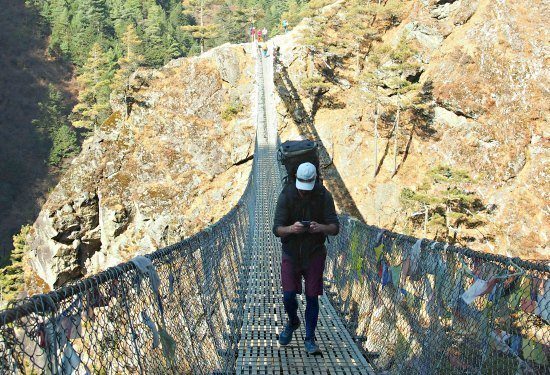
This is where things get complicated, what clothing, shoes, boots, pants, jackets, and so on to wear in Nepal. Be safe, always be ready for bad weather. But use common sense too.
In Kathmandu most casual clothese are fine. Local men will be wearing shirts and jeans, most women wear more traditional clothing. Try to be fairly modest, I wouldn’t wear short shorts in a city, nor revealing tops. You may need a fleece or rain jacket but the climate in Ksathmandu is pretty mild.
If you head south to Chitwan or Lumbini it will be hotter on the lowlands. Casual summer clothing is fine. We wear jeans in Nepal almost always. Thongs or flip flops are fine in the warm months, but you will also have your hiking shoes with you.
Nepal in January (winter) is very different to the peak trekking season in October. On our October Everest Base Camp trek we never saw snow. On the Annapurna Circuit in January-February, we experienced blizzards and waist-deep snow.
We haven’t taken the gear you’re “supposed” to buy on any of our treks. I’ve never owned a merino base layer, nor do I pack thermals. Most of this recommended gear is seriously expensive, we haven’t needed it.
Trekking Boots or Shoes for Nepal
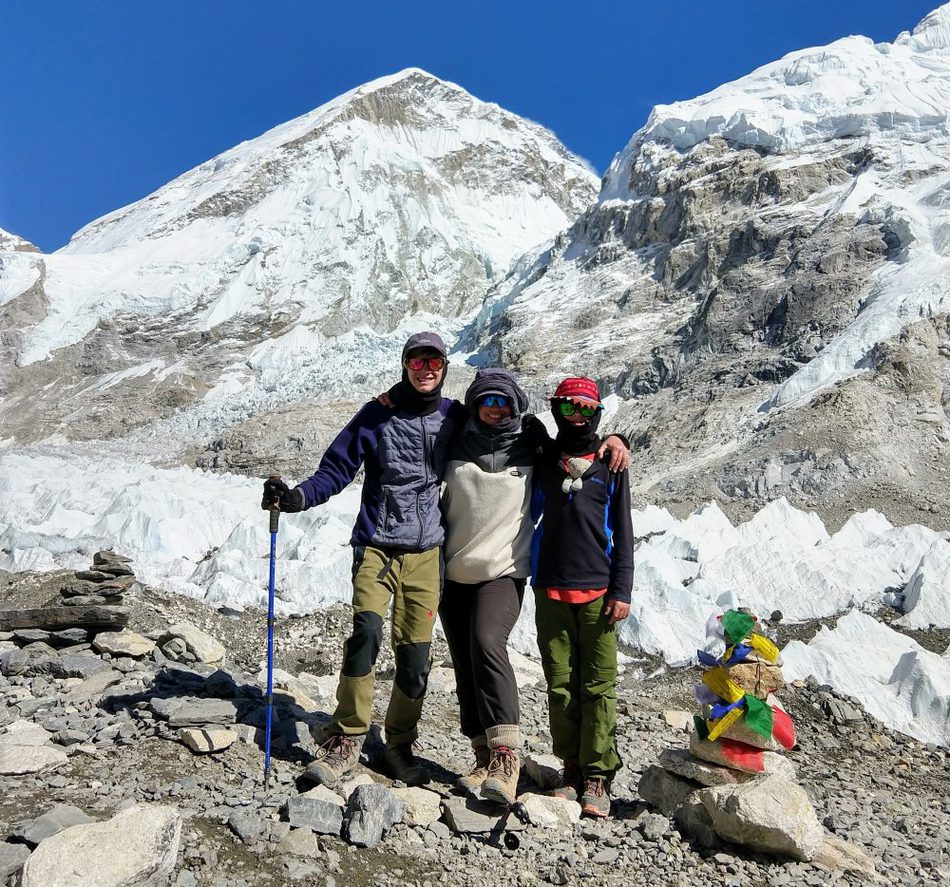
Don’t feel you have to go out and buy the best trekking boots on the market just because you’re going to the Himalayas.
The golden rule, whether you choose to buy hiking shoes or boots, is don’t buy them online, always try them on. Try on dozens of pairs if you have to and choose the most comfortable shoes or boots. If you have to work hard at breaking in hiking shoes, or you get blisters, you bought the wrong footwear.
Nobody in my family ever gets blisters when we’re hiking in Nepal.
Go to your local mountain gear store or Decathlon mega store and try on every pair. In the UK we would go to London for the big stores around Covent Garden to buy hiking gear.
My husband has been high in the Himalayas in running shoes and in top-of-the-range crampon-ready leather Scarpa boots.
I’ve been up there in light summer trekking shoes and in summer-weight hiking boots, the latter in deep snow.
One of the kids had hiking shoes bought in Kathmandu, the other had street shoes, and winter-type basketball boots or sneakers, he got to Tengboche Monastery.
We did great in all of the footwear mentioned above.
My husband preferred trekking in his running shoes right up past Namche Bazaar and into light snow, he found he slipped less, and walking was easier. Once the snow gets thicker, boots or good shoes are better. If you have the luxury of a porter or don’t mind taking a very heavy pack, you could take 2 pairs of shoes like this.
My summer hiking boots did OK in deep snow, but I was treating them with waterproofing spray every day. Wet suede, in deep snow, in winter, could have caused frostbite.
In snow, always add gaters (you can buy these on the trek or in Kathmandu, quality isn’t critical, or here on Amazon), they help keep the snow out of the top of your boots or shoes.
Running shoes will do you for EBC in good weather and you’ll see plenty of people doing this on the lower treks. I’m not advising you not to buy serious hiking boots, I’m just telling you not to worry too much particularly if you’re not going into deep snow.
You’ll notice that most of the trekking guides in Nepal favour trekking shoes over trekking boots. We were told by our guest house owner that shoes were better. But you do what you’re comfortable with.
Frostbitten toes are obviously to be avoided. We’ve seen people cross the Thorong La in deep snow in running shoes. It’s not a great plan, but I’ve also seen the hard sell in the hiking shops to buy the most expensive gear, often from salespeople with no experience of the Himalayas.
Just have your wits about you. I’m not going to give you links to buy hiking shoes or boots online as this is a very bad idea. You absolutely must try on boots for Nepal and be certain they fit before you buy them.
You won’t need shoe bags on your trek unless you plan to take a spare pair of shoes with you. People employing porters will likely be the only people taking multiple pairs of shoes on a hike, unless you’re my husband and plan to switch from running shoes to boots once you hit the snow. We make shoe bags from old T shirts but you can also buy them online.
Read our section on socks, below.
Trekking Socks
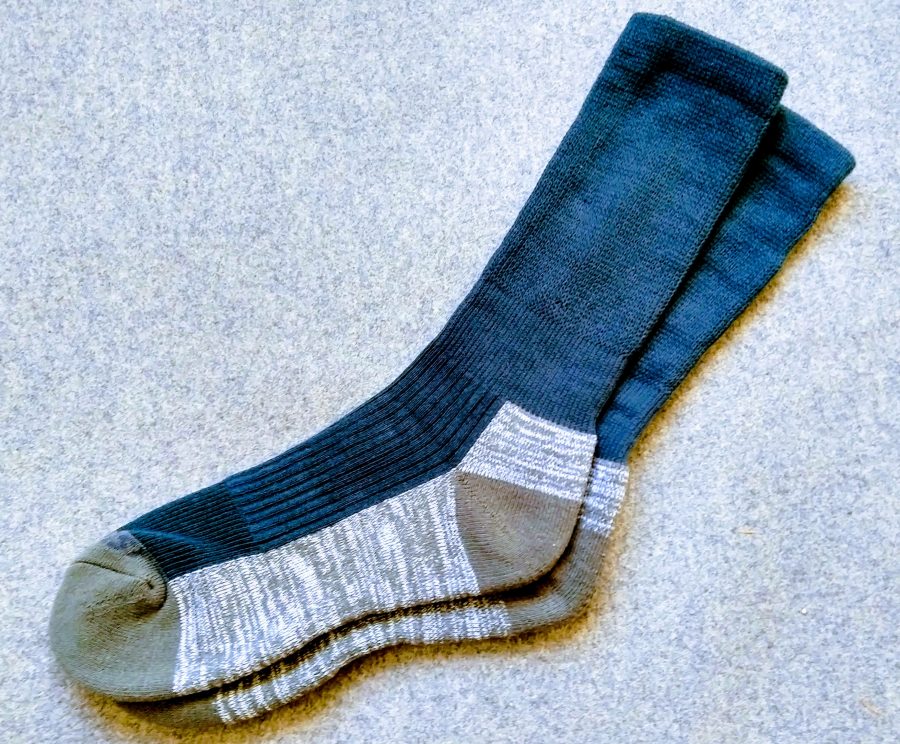
You will be wearing the same socks for multiple days without washing them. Unless, of course, you hire a porter to carry your wardrobe. You may be able to hand wash socks but drying them is all but impossible.
Sometimes I trek in thick hiking socks, sometimes in thin street socks, to me it makes little difference in well broken-in shoes or boots. The extra cushioning on the bottom of designated hiking socks can be very nice. Remember the EBC trek is only about 60 Km. It’s not a huge distance.
You can pick up socks in Kathmandu or Pokhara but we struggled to find kids’ sizes. I’d recommend bringing at least a couple of pairs of good socks with you from home.
Quality trekking socks like these are a good investment and can last decades (mine have!) Bridgedale are a classic, quality brand. You absolutely can’t go wrong with Bridgedales (buy here) or try the Isocool socks from Mountain Warehouse, buy those direct from a Mountain Warehouse store, or buy similar cool hiking socks online, here.
Marks and Spencer also have some good light weight, good quality, hiking socks which we have used in Nepal.
I think a pair of Bridgedales for cold and high altitude and the cool hiking socks for warmer days, lower down, works well.
We never get blisters, our boots fit well with any socks. If you hit the Bridgedale link (above) and have a click around you’ll see styles for women and men for different conditions. Take a look. Remember to get longer socks if you’re wearing boots, shorter socks are only for use with trail shoes.
People recommend wool socks. We don’t generally use wool but our Bridgedale socks do contain wool.
I’ve also seen people recommend, and use, wool booties in lodges. I would never do it. The WCs are likely to be wet and not hygienic, I wouldn’t wear anything other than my hiking boots in there.
We have our boots laced lightly so that we can slip them on and off easily in the lodges at night. You don’t want trailing laces in those restrooms.
You really can’t be cautious enough about hygiene on the Himalayan treks. Do everything you can to keep your hands clean.
A dry pair of socks and dry clothes after your day of trekking is a good idea. If you’re wet, or sweaty, you will stay cold. Put on fresh socks to go to bed, or have some designated sleeping socks.
Do You Need Crampons for Nepal?
Trekkers don’t normally need crampons, but on certain hikes, where there’s ice, they do.
You should not need crampons on the Everest Base Camp trek in October, we didn’t need them.
You can buy crampons on a stretchy rubber frame that slip over your boots and shoes in Kathmandu and in Namche Bazaar, or here on Amazon. These are a great investment for icy conditions anywhere in the world, as we found when we lived in Romania.
Trekking Pants and Waterproof Trousers
We’ve never bought special trekking pants so can’t comment. We’ve trekked in a strange mixture of stretch jeans, leggings, yoga pants, running tights, and shorts and did just fine.
If you’re going high or into snow add waterproof over trousers or special cold-weather trekking pants.
I also sometimes add legwarmers, a $1 buy in Kathmandu. I usually sleep in them too.
Base Layers, Thermals Jumpers and Jackets for Nepal
People recommend thermals and merino base layers for any trek or hike in Nepal. Do you need them? No, we’ve never bought thermals or any merino wool item for any of our treks in Nepal, including Everest Base Camp and the Annapurna Circuit in winter. Incidentally, we’ve never used them for skiing either, but if you have them, take them.
We just wear long-sleeved T-shirts, fleeces, hoodies, etc. I’ve never owned nor needed thermals for trekking or skiing.
We’ve taken down jackets brought from home as well as those bought in Kathmandu or even hired in Pokhara.
We’ve carried waterproof jackets and used them in blizzard conditions on the Thorong La (Annapurna’s High Pass, see video above). What you take, as always, depends on how high you’re going and the time of year.
I’d still steer clear of trekking stores’ “must buy” lists or packing lists as guides, they’re there to extract as much money as possible from trekkers who don’t know what conditions to expect.
If you have endless cash and want to be as warm and comfortable as you could possibly be, then buy them, I’m sure they’re nice to wear, I just want to tell you that we’ve never regretted not buying them.
You can buy huge, thick fleeces very cheaply in Kathmandu, I’ve had mine 15 years.
Sunglasses for Nepal and Trekking
Absolutely, you don’t want snow blindness. We trekked with a guy who’s glasses had broken, he had snow blindness for days and it was incredibly painful.
This is the brand of sunglasses we’ve used recently, they’re a budget buy for a family, but they are high enough quality, high performance and come with a lifetime guarantee. You can order them online, anywhere in the world.
If you have a bigger budget, buy Oakleys, they’re the most indestructible sunglasses I’ve ever owned. I’ve been using Oakley sunglasses for hiking, trekking, cycling and skiing for most of my life.
Get dark ones, ideally polarised, the light can be intense off the snow.
Gloves for Nepal
Fingers are particularly susceptible to cold. Yes, you need gloves of some sort but not necessarily top of the range.
Decathlon normally sells decent gloves. You’ll need your gloves to have a wind and water-proof outer shell if conditions get bad.
Hats and Buffs for Nepal
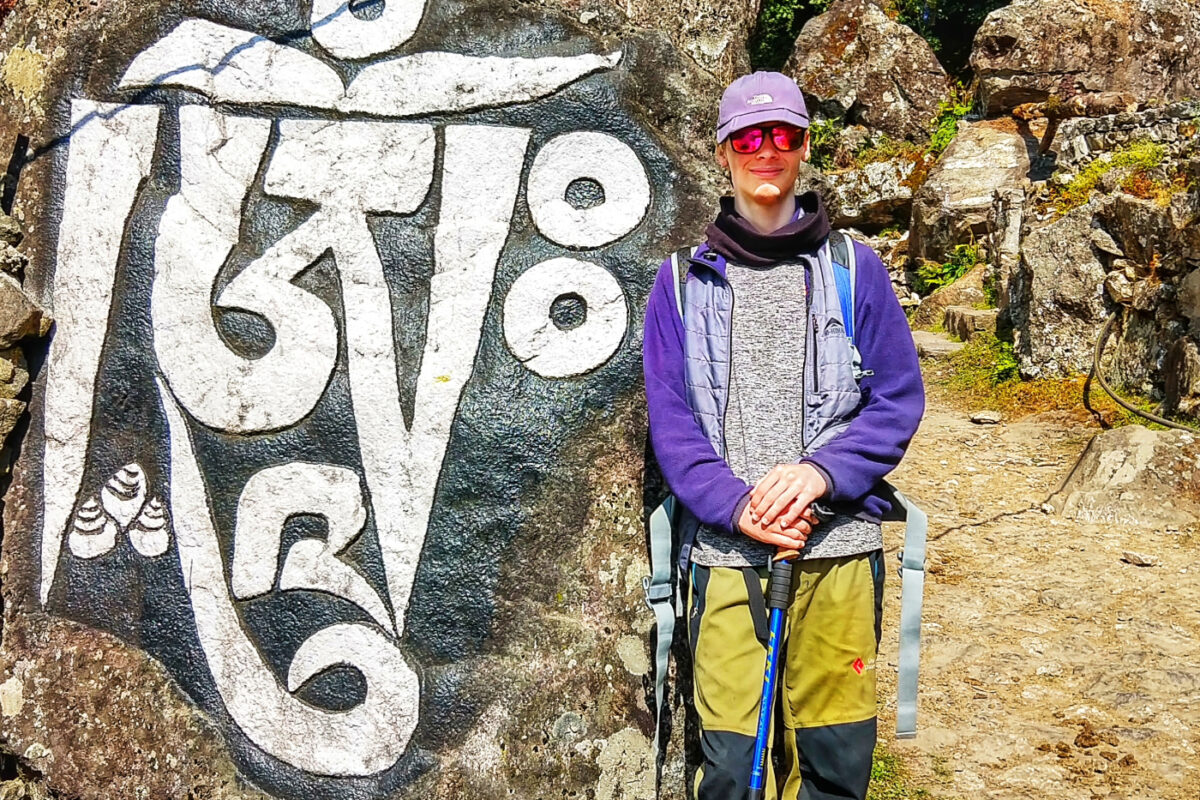
You’ll want something on your head but it doesn’t have to be a designer item. Buffs are great, but a cheap one from Decathlon does the job just fine.
Take a hat too, wide brimmed for sun, thick and woolly for warmth. You’ll want your buff plus a hat at high altitudes or in winter.
At low altitudes, on sunny days, you’ll be more worried about keeping the sun off. Scroll back up to the photo of us at Base Camp. It was taken on a “warm” sunny day.
On the top of the Thorong La in winter, we had hats, buffs, plus waterproof jacket hoods.
Toiletries for Trekking in Nepal
What toiletries do you need to pack for Nepal, as a trekker or holidaymaker?
Take as few toiletries as possible because they will be heavy. The essential toiletries we take are the following:
- a toothbrush
- toothpaste
- soap
- sunscreen
- lipbalm with sunscreen
- hand sanitiser gel
- toilet paper
We don’t even pack a hairbrush and shampoo usualy, as I have always had short hair on treks. Many lodges won’t provide soap, making soap for handwashing and footwashing, an essential.
We tend to buy a medicated soap, such as Dettol. You’ll need a plastic bag to carry it in. A soap box adds weight.
My husband does not take shaving gear trekking, I do not take makeup. You will see women wearing makeup on treks occasionally, it seems odd.
Also, take some sort of antiseptic cream or iodine for emergencies. Take some good quality band-aids or sticking plasters. We find fabric plasters stay on better than plastic.
We don’t get blisters when we trek because we have boots that fit well and they are well broken in. If you get blisters, you’ll be very unhappy trekking. Wearing two pairs of socks causes blisters in our experience, and yet the trekking gear shops will tell you to wear liner socks and over socks.
Take any other medications you may need. We take altitude tablets, bought in Kathmandu, for emergency use only. We have a post about our experiences taking these at high altitudes.
I think it’s a very good idea to take vitamins and minerals too. Your diet will be limited on your trek.
Check out what we’re wearing in the video, this was in the worst possible weather you’ll get, serious cold, blizzards (we were stuck up there at high camp for 3 days) and 5,416m at the top of the Thorong La on the Annapurna Circuit. The height is similar to Everest Base Camp.
A sun hat, a kramer from Cambodia and a buff, along with the hood from my waterproof jacket, did me fine. A cap is great too, to keep the sun off your face, a wide-brimmed hat may be better. A warm hat to wear in bed is nice too.
Inportant Documents and Paperwork For Nepal
Don’t forget to pack passport-sized photos for your trekking permits, check that your passport has 6 months left on it and has blank pages, and check your visa situation. You have to pay cash for your Nepal visa at Kathmandu airport, in the correct currency, so read up on these requirement. You should also have a copy of your insurance document. Do not rely on electronic copies in Nepal. Power and signal are variable.
Insurance for trekking is vital. Safety Wing (click through for a quote) will cover you up to 4,500m (EBC is at 5,500m approx) so check and double-check your insurance policy’s terms and conditions thoroughly, insurance companies keep changing what they will and won’t cover. We’re trying to find you a good insurance provider for trekking in Nepal.
Some attractions, including the Kathmandu Durbar Square and the whole of Bhaktapur also require a permit and you may need additional passport photos for these.
Trekking and Travel Gear For Nepal, Advice
If you’re long-term backpacking or on a gap year you simply can’t fill your bag with the perfect piece of gear for every occasion. If your trek in the Himalayas is a one-off, big event, and you have cash to burn, buy all the designer gear.
I’m not trying to give advice on what you should or should not pack for your trip to Nepal, just present you with options that will help you ignore the marketers, save the planet through consuming less and save your cash if that is your preference.
Nepal is a wonderful location for a vacation and probably the best country in the world for trekking, enjoy your visit. We have much more content about Nepal on our site, find our full Nepal travel archives and photos here.
That’s it for now, all can think of. I hope I’ve managed to put your mind at rest a little and help you realise that you don’t have to buy all of the trekking gear on the list. To an extent you can make do with what you’ve got so long as you don’t take risks. If you have any questions just put them in the comments and maybe I’ll bump into you somewhere at high altitude one day. You can go back to our main Nepal Travel Blog page here
If you'd like to hire a car during your stay, use this car rental comparison tool to find the best deal!
We also suggest you take a look at this company to get a quote for all kinds of the more tricky adventure or extended travel insurance.
Try Stayz / VRBO for an alternative way to find rentals on homes/apartments/condos in any country!
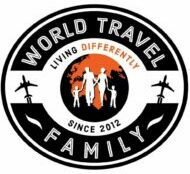
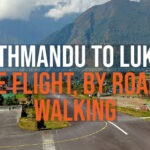
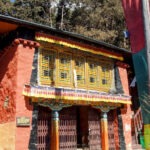
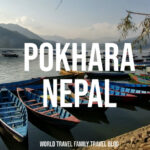
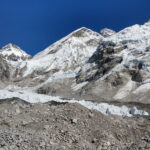
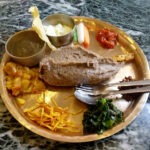
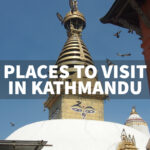
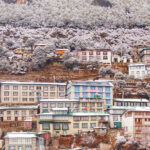
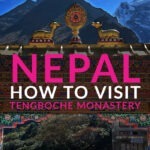
Hi Alyson, I’m planning on doing the Annapurna trek in October/ November 2019 with my 24 year old daughter , I was last on Nepal trekking in 1986 trekking clockwise from Pokhara to Jomson, unfortunately I had to turn back due to a visa issue, now in my late 50s I want to go back and finish off what i started, we would like to do the Annapurna circuit trek, tilicho lake, throng la pass and onto ABC, in your opinion how difficult would it be to do this solo or would it be better to hire a guide/ porter, would getting accomodation be an issue during this time, any information would be much appreciated.
Thanks in advance
Leo
I don’t think you need a guide Leo. Sure, it’s nice to put money in local pockets, but it would take some skill to get lost! If there’s a lot of snow up there, maybe, you could stray off the path. We were up at the Thorong La in deep snow, we waited 3 days for blizzards to pass and in the end were very glad of the friends we’d made along the way and the support we all offered each other. Some of them had guides, some didn’t. But that was Jan / Feb. Be warned that Annapurna Circuit is CRAZY busy these days. We had friends up there last October and the crowds were unreal. It was bad for us over at EBC at that time too, it’s peak season. Lodges get full. Read our post on Everest Base Camp Difficulty – that was last October. I can’t give you solid information as obviously, weather and crowds vary. But I’m hearing a lot about accommodation shortages over there.
Hi Alyson! Thank you so much for your blog – we are a family of 4 (daughters are 8 and 11), and we travel a lot, and its been super difficult to find advice from people who have the same approach to travel as you (and we) do. So here’s my question: Do you recommend a trek for us that’s about 5 days long, departing from Kathmandu? Here’s our background, in case it matters, though it seems that we would fit in perfectly with your family:
My husband is a climate change scientist and will be in Kathmandu for IPCC meeting in July 2019. The two of us have traveled over land from Lhasa to Kathmandu in 2005, I lived in China for a while between college and grad school, now we homeschool our kids (we live in the US) so that we can travel along as my husband has meetings everywhere. When we’re home, the kids are in wilderness school (and have been since they were 3 and 6yrs old), and they are troupers, we have all the gear you mentioned and they are used to camping long term, being outside in all kinds of weather, but they haven’t done any long term backpacking camping. They prefer mountains to cities EVERY SINGLE TIME. But, the younger daughter isn’t really all about pushing herself to her limits, the older daughter is definitely up for it. So we end up encouraging the younger one all the way, and then she’s happy and proud of herself at the end. As I’m sure you know, its exhausting to be cheerleader all day long, so I like to choose a happy medium. On this trip, we are flying into Kathmandu from the arctic of lapland, and will be continuing into China for a few weeks afterwards, but we really don’t want to miss this chance of trekking and being in the glorious inspiring nature and culture of the Himalayas. Any suggestions of manageable treks would be most welcome! Thank you!!!
5 days really isn’t long and we’ve nevr done any short treks. You could of course, fly up to Lukla and just walk for 2 days, maybe 3. Walking back is faster but it’s not easy, it’s not all up then all down You’d get to Namche Bazaar, get a view of Everest, you may get as far as Tengboche then have to turn back, but those flights can be an issue, there are a lot of cancellations because of weather. There are short treks from Pokhara, but you’d lose 2 days on the bus there and back. There may well be some short ones from Kathmandu but I just have never looked for them, sorry. None of them involve camping. If you can just get as far as Namche it’s certainly worth doing, but be certain your kids are OK with heights. The bridge before Namche is horrific and if my kids were scared of heights – as I am- it would be child abuse to force them over.
Hi,
Myself and my boyfriend are planning a trip to Nepal in Sep 2019- your blog has been incredibly helpful thank you! We are considering Everest base camp and Gokyo valley. We are both relatively fit and healthy but will take our time and from your advise organise the tour ourselves rather than go with a group. I estimate it will take us roughly 2 1/2- 3 weeks. What is your thoughts on the Gokyo valley as i’m unable to find a blog with this in?
I’m worried about the weather in September and how cold it will get as we reach EBC. We have been skiing previously so have base layers which i’m sure will be ok but i’m worried about the night.
As for the rest of Nepal we will definitely be checking out the temples etc you have suggested. Your piece about Chitwan and getting there from Kathmandu has been extremely helpful as I was unsure originally if we will do this but now i’m almost certain it’s worth a visit!
After reading this i’m very excited and can’t wait for September to come around!
Thanks x
Hi there. I can feel your excitement, that’s great. Did you read our post – Everest Base Camp difficulties? We were there last October, peak trekking season and it wasn’t THAT cold at night. Maybe getting to minus 10 C right up at Gorak Shep. Night time, ideally, you want to be in dry clothes if you’ve sweated during the day, but it’s not always possible, too tired, too cold to change, just can’t be bothered, but it’s sensible. You sleep in all your clothes, basically. A warm hat that will stay on in bed is essential, keeping your head warm makes all the difference. I didn’t have a sleeping bag even, just a sheet liner and a $8 fleece liner from Kathmandu, I was OK. I loved my leg warmers, wool ones $2, I’d pull them over my feet at night and mostly I just wore those with running tights or I started the trek in light jeans , comfortable ones with stretch. My husband mostly wore shorts then added leggings underneath at the top. I’m going to write a full EBC packing list post because there are some ABSOLUTE essentials and some items people suggest that are just ridiculous…like wollen bootees…you want to go in a wet squat toilet in wooly bootees? Crazy, then you have to put them in your pack the next day..just no. Anything else you need to know, shout, I’ll create the post. Gokyo we didn’t do. We sort of thought we might, but by the time we were heading back we were tired and longing for a shower and clean clothes and just didn’t want to. Also our Sherpa friend and another trekker warned us that it was pretty terrifying, steep drops, narrow paths and I’m not good with heights. So nope, we didn’t go. Might do next year, but thisyear we’re going to Pakistan for K2 base camp … which will probably also be terrifying.
Also Alex, I started a Facebook Group, Trekking Travel, if you’d like to pop over there and chat.
Hello im hana from a tropical country where its basically spring/summer all year round lol)
Me and some 20 people are heading to kathmandu and will be trekking the langtang valley upto kyanjin gumpa and summit to tsergo ri (less than 5000m). Will be going these next few weeks roughly 10-20th feb. This is during mid winter ? (Im not sure?)
This is my first time in nepal and first time trekking in winter. Really nervous & dont know what to expect…but your article has soothed some of my nerves, thanks for that!
Just really concerned abt the sleeping bags…should i really not buy them? And would just the liner suffice? Reading what you wrote abt snow upto armpits are really shaking me up ????
If we were going high we would most certainly take sleeping bags. Also if you have porters to carry them it’s no problem. The post below is talking about lower altitude trekking, we didn’t go nearly as high as EBC or the Thorong La on this walk, only to Tengboche. If taking your own, clean, lovely sleeping bag was no problem, i’d take one absolutely, every time, but carrying one, and the expense, is an added burden. But don’t stress!
Hi I am trekking Annapurna crossing thorung La & going to Tilicho end of Jan 2019 Feb 2019.
I have never been to anything like this in relation to climate & am really nervous about how cold it can get.
I have been told to have a base layer, a mid layer fleece & down/wind jacket is this all I will need?
I have inner gloves and outer gloves, a few pairs of sock but havent got any pants as yet as I have been told I can get these in Kathmandu is this correct?
Thanks
Susan
It will be very cold. Probably. We did it in February and got stuck up at high camp in a blizzard. Don’t trek in conditions like that! People like to hand out these shopping lists of gear to make you spend more. It’s BS. Don’t think you need to buy everything especially for trekking from knickers up. Sure, you could. If you have money to burn it’s probably the easiest way. But if you don’t want to spend thousands work with what you’ve got. You will either need a very good heavy fleece or a down jacket. If you’re buying new get the down, it’s better. You may need a water/ wind proof outer coat and waterproof trousers. We took our waterproof jackets up Everest last time and used them for exactly 5 minutes. However, I don’t think I’d go without a waterproof jacket. It depends, if you’re trekking independently and can stop if the weather is bad, you may be able to get away with not taking one. If you’re in a group and on a tight schedule, you’ll have to push on despite the weather. Your base layer can be leggings of any sort, a vest, long sleeve T shirt. Anything. Or you can go with the expensive merino. Dry clothes to put on for bed does help a lot, but often you won’t want to be getting changed if it’s cold. a long sleeved/ high necked fleece is great for trekking during the day, you may even strip down to just a T shirt. Be sure to take sunblock and lip salve with sunblock. The gloves I took last time were useless, supposedly windproof but gave no insulation, I just put my hands in my pockets, previously I took cheap fleece gloves and they were fine. If you have ski gloves they should be fine, but it’s all extra stuff to carry. Take as little as possible. Did you read our post on Everest Base Camp trek difficulties? There’s more information in there, but it will be a lot colder when you go. A warm hat is essential, not least to wear in bed. Wool is fine, or a good fleece, as well as a hat to keep the sun off your face. I often wear a fleece buff on top of a cap and then you have the hood of your waterproof too if you need it. But it’s personal choice. My husband treks in shorts and puts leggings underneath when it gets cold. I wouldn’t dream of trekking in shorts. He would rather wear running shoes, I prefer light boots. My son treks in jeans, I trek in jeans sometimes too. I’ve seen women up there in skirts. Some people buy mountaineering gear and look like they’re summiting when they’re only going for a walk ( don’t be them, it’s embarassing!) . What I’m trying to say is, there are no hard and fast rules and everyone has different parts of their bodies that get cold. For my husband it’s his hands, he always wears ski gloves, whereas I hardly need gloves at all. Just don’t get frostbite! If I can take 2 kids to EverestBase Camp in jeans and unicorn hats I’m sure you’ll be fine.
Hi thanks for this realistic post. I am going on 22 October for 18 days through to EBC. My confusion is with
1. waterproof jackets: Rain jacket or a hard shell
2. Down Jacket: how thick in terms of fill and goose or duck.
Hope you can assist
Thanks
For Annapurna we took waterproof and down. Standard Goretex type stuff bought from the UK. I hired my down jacket in Pokhara, and my sleeping bag. We only needed them for really 2-3 days of the whole almost month up there so it’s a real pain to have to take them. We hit blizzards and actually crossed the pass in armpit deep snow. But it’s unpredictable, luck. Lots turned back. Some had no gear, some got frostbite. I think the “down” was actually synthetic.
Wow Alyson sound like a pretty hectic time.. Thanks for the info!
D
Am prepping for a trek in the Himalayas and your post was just awesome. Nice checklist to ensure you have everything in order.
Thanks a lot for sharing.
I am going to have trekking soon, and fantastic that i found this article much helpful and its checklist. Thanks for sharing.
This is very helpful as I am planning a long trekking next year. I have bookmarked this site. Keep it posting. 🙂
I would be leaving for a trek in the Himalayas in September. So this is going to be really useful to me. Thanks for posting 🙂
The problem with buying fake gear is not what you’re getting but who you’re funding further down the chain. Yes the nice little man in the shop benefits, but at the other end of the chain is most likely organised crime. It’s the reason I didn’t buy fake Ray Bans for a couple of $ is North Africa, as the funds are most likely going to terrorist groups in Africa, and of course the criminals in China. It’s simply not ethical to buy fake gear, and mountaineers have an obligation to consider ethics imo.
I am going to Nepal in November, on a tour with Intrepid Travel. I have seen a great deal of advice on what you will need for trekking – but nothing on what to take if you are NOT trekking! I live in the sub-tropics and consequently have hardly any clothing suitable for a northern hemisphere winter! I have been hunting for some sort of jacket, both in retail stores and thrift shops. I complicate the matter somewhat with my personal preferences, ie., no zips, no hoods, no synthetics. There will not be time to look for anything on arrival in Kathmandu, as the tour starts the morning after arrival. Therefore I must find something now. Have also not been able to get a definite answer on what power adapter to take. Have seen that types C, D and M are in use – does this mean I have to take three separate adapters?
Hi Lyn. I think you’ll only find it chilly at night. Just regular trousers/jeans, whatever should be fine. I just wear a fleece but I guess they fall short of your synthetics ban. They make them from recycled water bottles in Nepal, so I’ve been told… From memory, they had the 2 round pin and 3 round pin types. The 2 pin will, of course fit the 3 pin plug. I’m trying to remember if we had to use the pencil trick, sometimes you have to wedge a pencil in the top hole to momentarily “open” the bottom two pins if you only have a 2 pin going into a 3 pin. We do that a lot in India, but I can’t remember if we did for Nepal. I’m fairly sure a standard European plug works fine for Nepal but I’d really need to check with Chef, he’s my electronics wiz, but he’s out right now sorry.
We usually travel with multiple plug types, including British and European, I think we saw British style plugs in Nepal too. Can you not just get a multi-adapter?
Excellent post. Exactly what I needed to read while we prep for our EBC.
Hi, I am leaving on Sunday this week to go on trekking in Everest region, and i am very surprised about your text talking about the sleeping bags…. You do not need a warm sleeping bag, even if you want to be in the smalest and simpliest lodges whithout heating at this moment of the year ? (We want to trek to Kala Pattar but we will do this alone and want to sleep homestay….)
Thanks for your answer
and for all your blog !!!!
They have blankets @Chloe. We never had any problem at all with not carrying them, but we only went as high as Tengboche. We lugged sleeping bags around the Annapurna circuit years ago, I don’t remember the sleeping bag situation there. No lodge we saw had any heating other than the wood or yak dung fire in the dining room. They’re all very simple and pretty flimsy. And we were up there at the end of Winter, Feb into March. Annapurna we were a lot colder and a lot higher, we had blizzards and armpit deep snow when we crossed the pass ( after being stranded by the weather for 3 days at high camp). We spend winter in Romania, where it’s colder, so I guess we’re well used to sleeping in an industrial freezer, but we were never cold under the blankets.